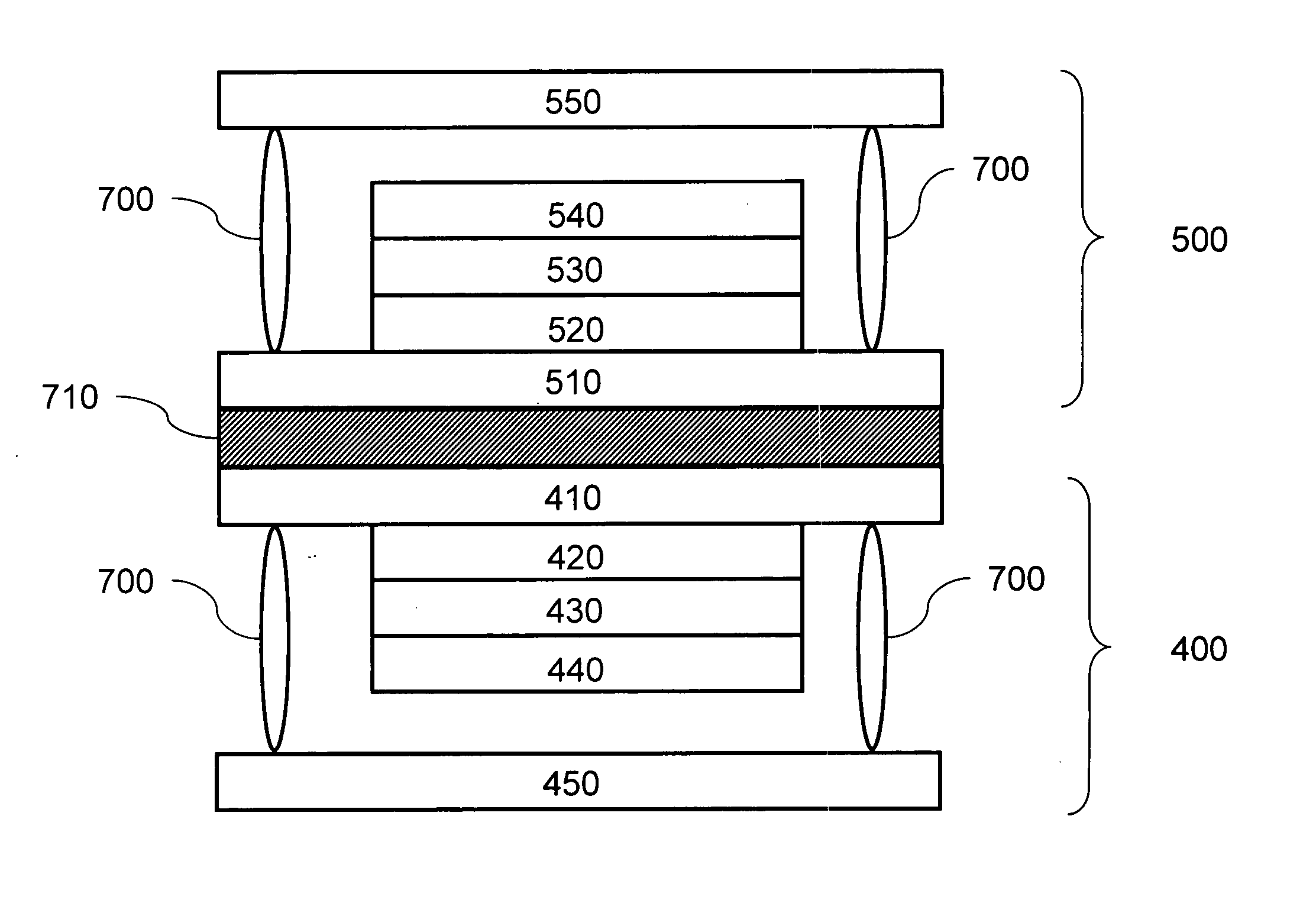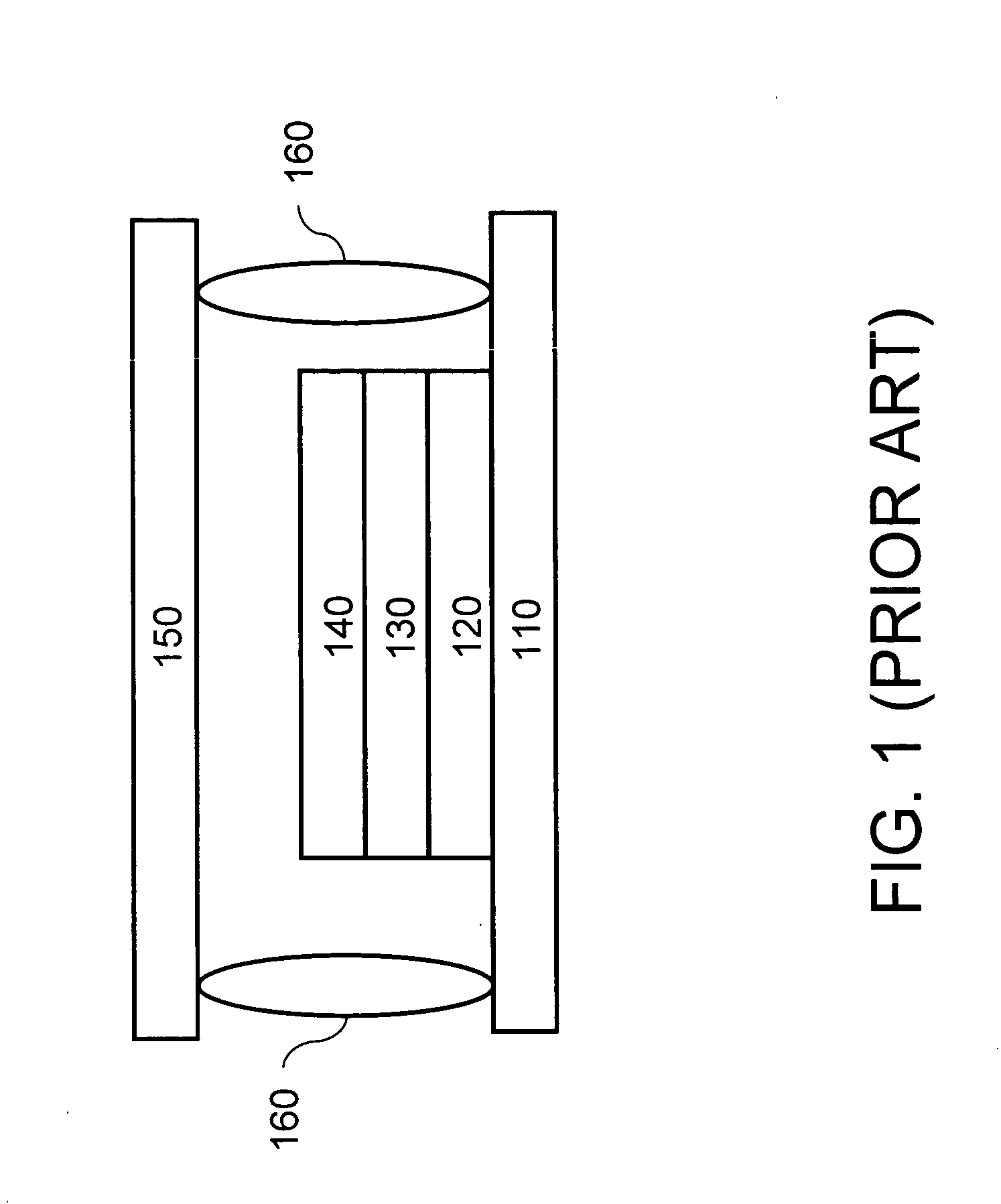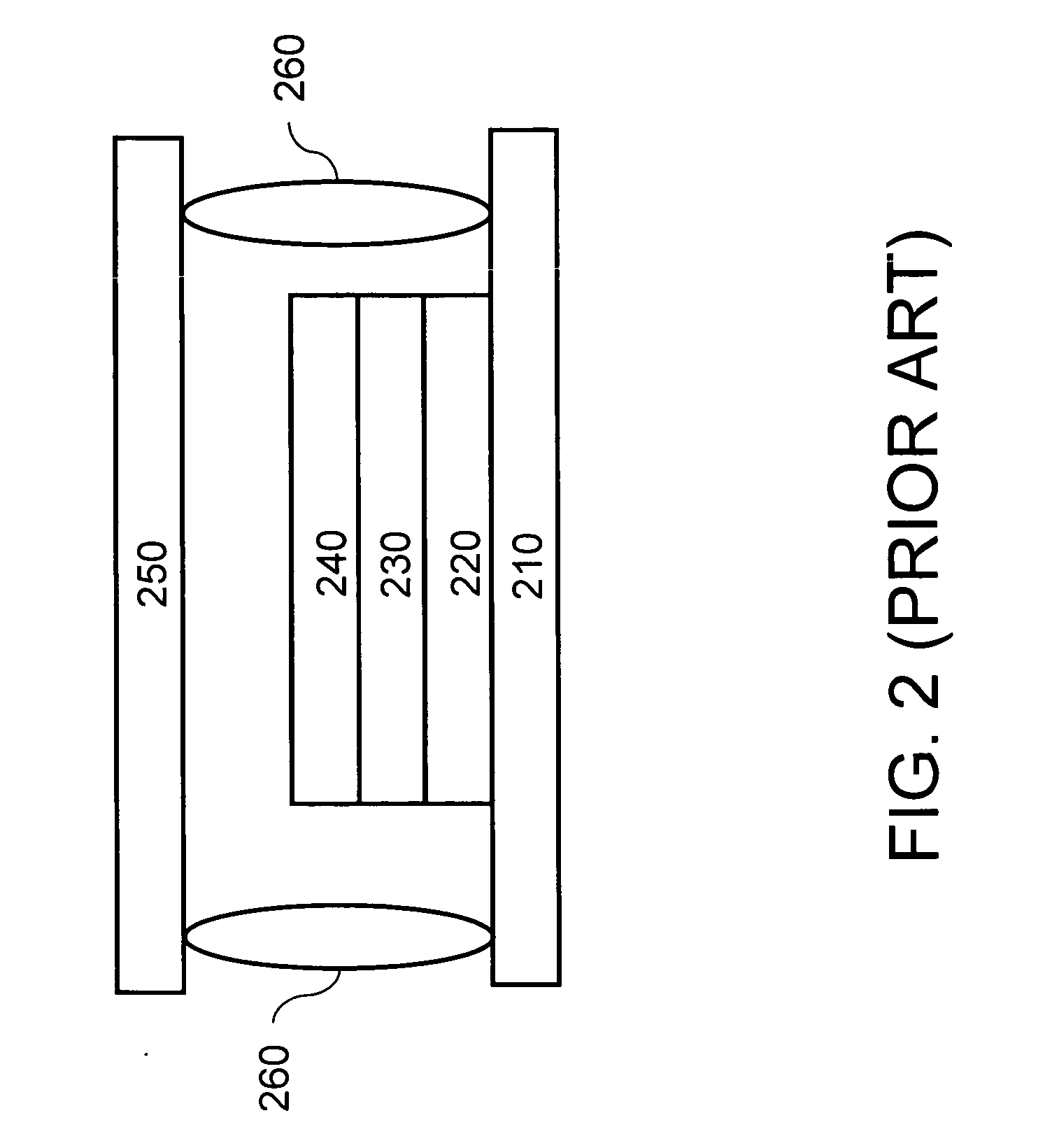Self-charging organic electroluminescent display device
a display device and organic technology, applied in the field of organic electroluminescent display devices, can solve the problem that solar cells cannot be charged at the same time when the display is in use, and achieve the effect of reducing the cost of mass production, reducing volume and weight, and effectively controlling the charging function of solar cells
- Summary
- Abstract
- Description
- Claims
- Application Information
AI Technical Summary
Benefits of technology
Problems solved by technology
Method used
Image
Examples
first embodiment
[0033]FIG. 5 shows the first embodiment of the disclosed self-charging organic electroluminescent display. The organic solar cell and the organic electroluminescent display are formed on two separate substrates, which are then packaged into a single display module.
[0034] The self-charging organic electroluminescent display includes an organic solar cell 400 and an organic electroluminescent device 500. The organic solar cell 400 is comprised of a first substrate 410, a conductive film 420 as a positive electrode, an organic solar energy absorption film 430, and a conductive film 440 as a negative electrode. The organic electroluminescent device 500 is comprised of a second substrate 510, a conductive film 520 as a positive electrode, an organic electroluminescent film 530, and a conductive film 540 as a negative electrode.
[0035] In the organic solar cell 400, the first substrate 410 is made of glass, plastic, or ceramic materials. The positive electrode film 420 is made of ITO or ...
second embodiment
[0046] Please refer to FIG. 9 for the second embodiment of the invention. An organic solar cell and an organic electroluminescent display are formed in different areas of the same substrate.
[0047] The organic solar cell 400 includes a common substrate 411, a positive electrode film 420, an organic solar energy absorption film 430, and a negative electrode film 440. The organic electroluminescent device 500 is similarly formed in a distinct area on the same surface of the sharing substrate 411. It further contains a positive electrode film 520, an organic electroluminescent film 530, and a negative electrode film 540.
[0048] The manufacturing process goes as follows. The positive electrode film 420, the organic solar energy absorption film 430, and the negative electrode film 440 are formed in order on the common substrate 411, forming the organic solar cell 400. In another area of the same substrate, the positive electrode film 520, the organic electroluminescent film 530, and the ...
third embodiment
[0052] Please refer to FIG. 11 for the third embodiment of the invention. An organic solar cell and an organic electroluminescent display are formed in the same area of a substrate.
[0053] The organic solar cell 400 includes a common substrate 411, a positive electrode film 420, an organic solar energy absorption film 430, and a negative electrode film 440. The organic electroluminescent device 500 contains a positive electrode film 520, an organic electroluminescent film 530, and a negative electrode film 540.
[0054] The manufacturing process goes as follows. The positive electrode film 420, the organic solar energy absorption film 430, and the negative electrode film 440 are formed in order on the common substrate 411, forming the organic solar cell 400. An opaque insulating layer 460 is formed above the conductive film 440 by evaporation. Afterwards, the positive electrode film 520, the organic electroluminescent film 530, and the negative electrode film 540 are coated in order, ...
PUM
 Login to View More
Login to View More Abstract
Description
Claims
Application Information
 Login to View More
Login to View More - R&D
- Intellectual Property
- Life Sciences
- Materials
- Tech Scout
- Unparalleled Data Quality
- Higher Quality Content
- 60% Fewer Hallucinations
Browse by: Latest US Patents, China's latest patents, Technical Efficacy Thesaurus, Application Domain, Technology Topic, Popular Technical Reports.
© 2025 PatSnap. All rights reserved.Legal|Privacy policy|Modern Slavery Act Transparency Statement|Sitemap|About US| Contact US: help@patsnap.com



